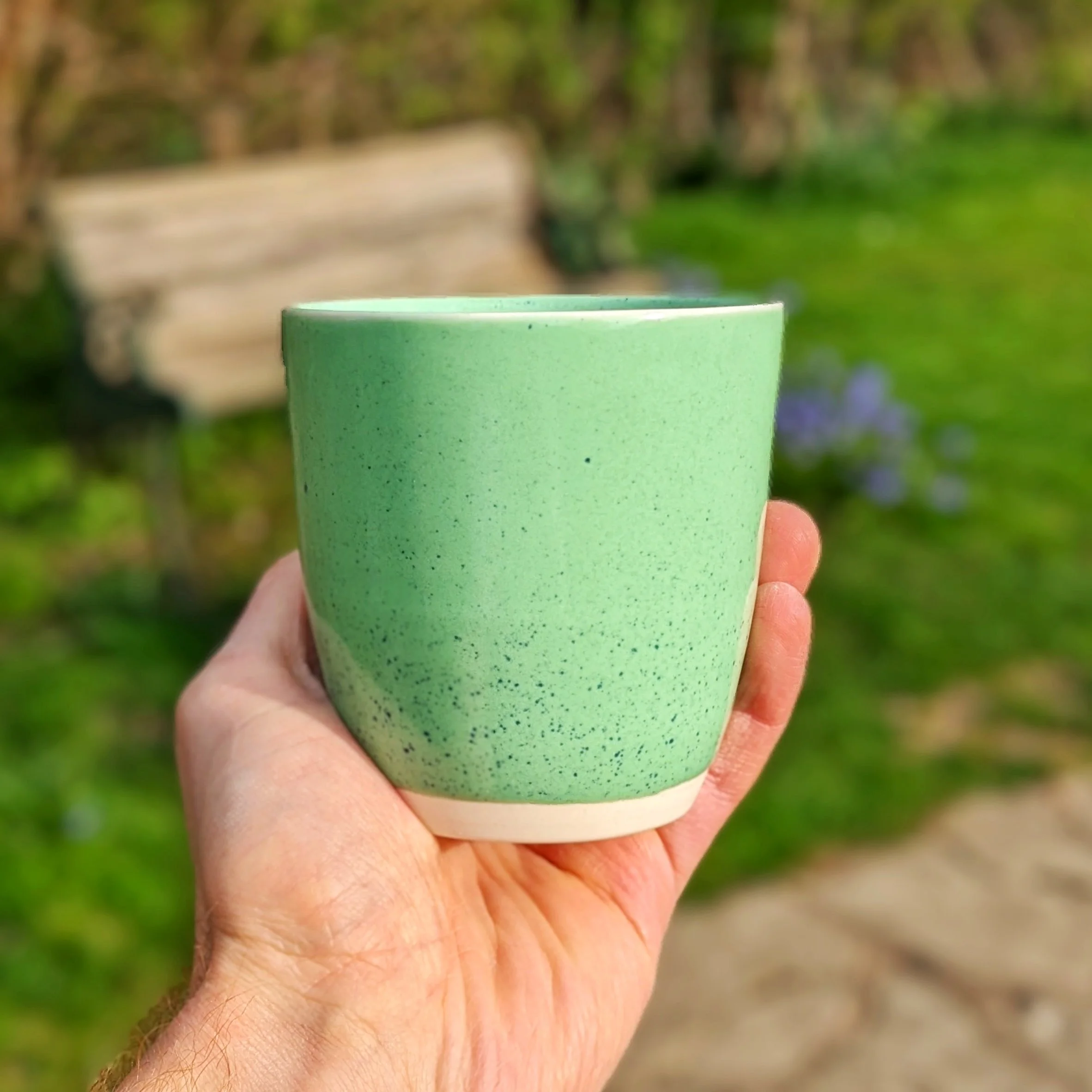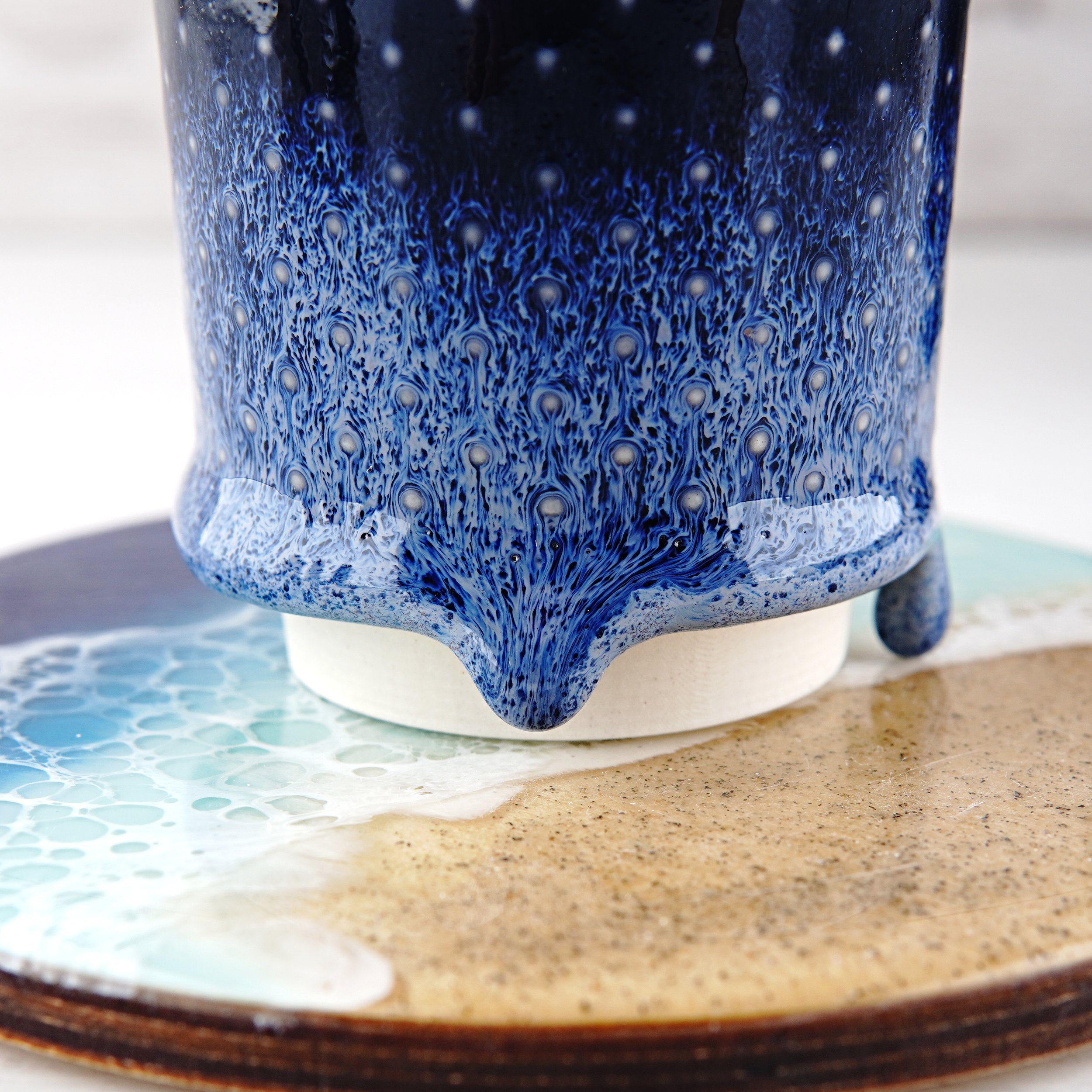Environmentally Friendly Pottery
Environmentally Friendly Pottery
It’s increasingly apparent that our actions are having a dramatic effect on the planet and the steps we’ve been taking aren’t going to be enough to avoid significant further damage. I know a lot of us want to do more about that, but it feels in sharp contrast to a profession/hobby that requires a significant amount of mined resources and power.
There’s no avoiding it completely. There are easy steps we can take to reduce the environmental impact, but any activity will have its costs and pottery is particularly resource heavy.
These are a few suggestions for ways we can be mindful of the impact, and steps we can take to limit it.
The Seven R’s
It used to be just Reduce, Reuse, Recycle, but the list has been expanded to cover more possible solutions. They are originally in terms of being a consumer, and in order of importance:
Rethink - An overview. What sort of consumer do you want to be?
Refuse - If a purchase doesn’t align with your values, can you live without it?
Reduce - Can you buy less, or require less shipping and packaging?
Reuse - Can something have a second use after its original purpose?
Repair - If it breaks, can it be fixed?
Regift - If you don’t want it, do you know someone who might?
Recycle - Can the materials be used again?
Not all of these apply to everything we do, but they can be a great framework for looking at how we make in the studio
Water
Reduce - If you have a sink with a tap in your studio, an easy change is just not running the tap any more than necessary. It’s much better to use a series of buckets to wash tools (or build/buy a recirculating sink).
Reuse - Water can be used to throw/wash tools/etc repeatedly. The clay or glaze will settle to the bottom and can be separated easily (use a different bucket for the clay and the glaze, to avoid mixing the reclaim). One bucket will get the majority of the clay/glaze off the tools, and the next bucket will get them clean. Once the first gets too full of clay/glaze, set it aside to reclaim and move the second bucket up to take its place.
Using sealed containers and keeping them away from sunlight should prevent the water from going green.
Recycle - If the water does start to go a bit swampy, it can be used to water plants (I wouldn’t use glaze reclaim water for this though).
Clay
Reduce - Using less clay can be as simple as rejecting pieces sooner in the process. Clay can be recycled at any point up to bisque firing, so rejecting early is best.
Reuse - Clay is easy to reclaim. Clay from your cleaning bucket just needs the excess water removed. Dry clay scraps need to be slaked in water for a day or more to break them down. Using a high powered mixer (a cheap plaster mixer is ideal) to turn the reclaim into a smooth slip, then remove the excess water and rewedge it into throwable clay.
Recycle - If you’ve glazed fired the piece before rejecting it, it can be used in other art projects (mosaics, concrete terrazzo, etc). Mugs with flaws can have holes drilled in the bottom and used as planters.
Glaze
Reduce - Don’t mix up any more of a glaze than you have to, until you know you want it. This means testing efficiently and sensibly, and only moving to larger batches when you’re sure the glaze will work.
Reuse - Glaze reclaim collected from tools will be an average of all the glazes that went into it, so might not be the prettiest or strongest colour. Adding red iron oxide can make a nice dark colour for very little extra cost, and will usually work nicely as a base glaze with others over the top.
Regift - If you’re not going to use a batch of glaze but there’s nothing fundamentally wrong with it, give it to someone else.
Power
Reduce - The main source of power use for most of us will be the kiln. Making sure that you’re loading efficiently and only firing pieces that have a good chance of surviving the process will be the best way to make the most of the energy you do use.
Unless your studio has a roof suited to solar panels, switching to green energy is probably a better solution than generating your own. A kiln requires far more energy over a firing than a typical solar and battery setup can provide, so you’ll be using the grid regardless, and it’s better to have the panels in a well maintained solar farm than on an inefficiently angled roof.
Reuse - Many industries with heat as a waste product will find a way to use it to heat nearby buildings. It might be hard to set up, but trapping/sharing waste kiln heat would be better than discarding it (in winter at least).
Materials
Reduce - Locally mined materials should have a lower CO2 footprint than imported ones, although bulk international transport is incredibly efficient. Minimising the number of deliveries from your supplier or using a more local supplier might have a bigger impact than the original source of the materials.
Buying materials dry and in larger quantities can reduce the shipping and packaging footprint too, as you’re not transporting the water weight and the larger bags will use less plastic packaging than smaller tubs of material.
Some materials are harder to get from responsible sources (cobalt, lithium) and some are harmful if released into the environment (zinc, chromium), so it’s important to consider what you purchase and how you dispose of it. It’s best to use everything, but if you do need to discard something hazardous to the environment, you can put it in a scrap pot and bisque fire it first. This fuses it into a solid mass and prevents it contaminating waterways.
Reuse - Some waste products can be easily converted into usable ceramic materials. Wood ash and egg shells can be used as glaze ingredients
Postage and Packaging
Reduce - Minimising breakages is the most important factor as any saving in either is worthless if the piece has to be remade anyway.
It is possible to totally avoid plastic when packing ceramics for shipping, but can require a bigger box to pack adequately. Being mindful of the higher CO2 cost of shipping larger boxes, especially when flown internationally, can help you find a balance between plastic and CO2 here.
Reuse - Reusing packaging materials is the best option for the environment, but it’s worth telling your customers that’s what you’re doing as it will then become their responsibility to dispose of it correctly.
Recycle - Packing materials should be recyclable. Using paper tape and paper labels makes the cardboard box easier to recycle. The starch packing peanuts are slightly compressible and can be packed in tightly around ceramics for excellent protection, and can be put into compost/food waste afterwards.
Carbon Offsetting
The idea of carbon offsetting is to pay money to reduce carbon elsewhere, to offset the carbon you produce. In theory, it could be a good short-term solution to several problems at once. In practice there are numerous documented cases of the schemes achieving absolutely nothing, sometimes producing even more carbon to do so.
I think we should be doing carbon offsetting as well as what we can to reduce the amount that needs offsetting, but selecting the offsetting company based on transparency rather than price. I use COTAP as they fund tree planting to alleviate poverty at the same time as reducing carbon, and have fantastic transparency.
Whataboutism
I’m sure there’s some of you who have made it this far thinking some variation of ‘But what about [corporations/governments/countries]?’.
You’re absolutely right to think that. Individual responsibility isn’t the whole picture, or even close to it. The idea of a Carbon Footprint was pushed by BP back in the early 2000s as a way of shifting the blame to individuals rather than facing the scrutiny themselves.
The great news is, you can do both! You can reduce your Carbon Footprint, while also voting for and applying pressure to politicians who will do something about the wider picture.
It will take both to get any significant progress, but it’s not an excuse to do neither.
If you like this sort of content and want to support the creation of more, I now have a Patreon specifically for it or a page on my website if you just want to make a single donation.







